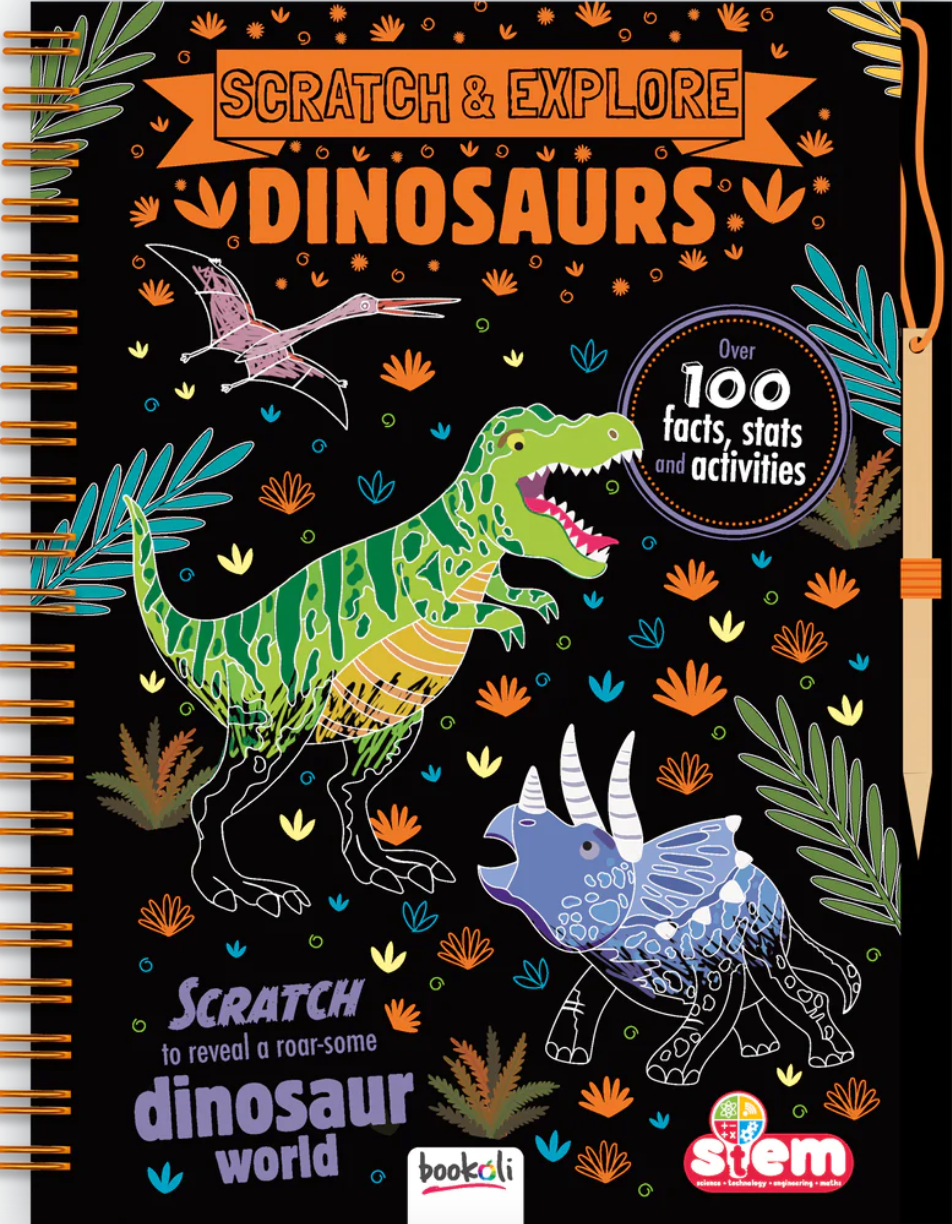
on this page
dinos and evolution (13)
extant life (18)
31 books
Last updated March 2025
Not all animals are still alive. In fact, most aren't. The 8 million types of living things we have now came about through evolution, starting with tiny cells that probably had a boring time. And now we have pandas, pangolins and people. In between — weird and wonderful things, from lungfish to dinosaurs, pterosaurs to glyptodons, mammoths to apricots (yep, plants, too).
Evolution is one of my favourite things to write about. I've also been lucky to work with some excellent illustrators, so these books look fantastic. And who doesn't like dinosaurs?













Weird and Wonderful Dinosaur Facts (Arcturus, 2025)
The Story of Humans (Arcturus, 2023) — human evolution from the very start
Scratch and Explore Dinosaurs (Curious Universe, 2023) — scratch (but not sniff) to reveal dinosaur scenes while you learn about dinos
Visual Timelines: Life on Earth (Arcturus, 2023)
Dinsoaurs: 500 Questions and Answers (Arcturus, 2022)
The Dinosaur Book (Lonely Planet, 2021)
The Story of Life (Arcturus, 2019) — evolution of everything from slime mould onwards
Dinosaur Atlas (Lonely Planet, 2017)
Absolutely beautiful illustrations by James Gilleard make this my favourite book of all. Short-listed for the Royal Society Young Person's Book Prize, 2018, and winner or the SLA prize (7-9 category), 2018.
Discovering Dinosaurs (Quarto, 2017)
A 'layer by layer' book with split pages — and sound effects!
Dinosaur Factivity (Parragon, 2015) — with a plastic dino skeleton to build
Travel back through time to the land of dinosaurs (Paragon, 2014)
Evolution (TickTock, 2014)
But there are plenty of animals left (so far — we have to be careful with them). These books show you some of the amazing things that live around us, from the cute and cuddly to the weird and wonderful.


















Panda School (Ransom, 2025)
Weird and Wonderful Animal Facts (Arcturus, 2024)
Little Monkey (Oxford University Press, 2023)
This series has a story, and flaps hiding information about the animals
Tiny Tadpole (Oxford University Press, 2023)
Baby Owl (Oxford University Press, 2023)
Baby Polar Bear (Oxford University Press, 2022)
Baby Koala (Oxford University Press, 2022)
Little Tiger (Oxford University Press, 2022)
Curious Questions and Answers: Coral Reefs (Miles Kelly, 2022)
Curious Questions and Answers: Rainforests (Miles Kelly, 2021)
An Animal Park Keeper (HarperCollins, 2020)
Animal Atlas (Lonely Planet, 2019) — beautifully illustrated, with flaps
Into the WIld (Quarto, 2017)
A 'layer by layer' book with split pages — and sound effects!
Under the Sea (Quarto, 2017)
So You Want a Pet? (HarperCollins, 2015)
You Wouldn't Want to Live Without Insects (Salariya, 2015)
Amazing Pets (Hachette, 2014)
Super Animals (Hachette, 2013)

Do you want to find out about more science books? There are books about:
>> alive! (being you, assuming you're human)
>> space, our planet, and its neighbours
>> technostuff
>> science just for fun